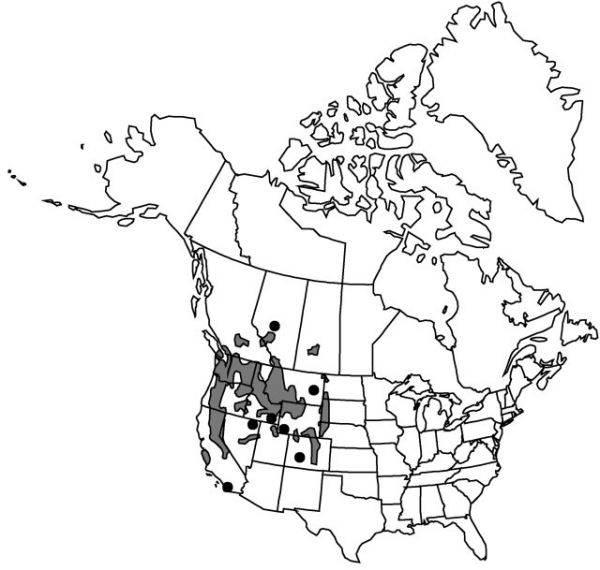Zigadenus venenosus
Proc. Amer. Acad. Arts 14: 279. 1879.
Plants 2–7 dm, from bulbs; bulbs not clumped, tunicate, ovoid, 10–30 × 8–20 mm. Leaves: proximal blades 12–50 cm × 2–10 mm. Inflorescences racemose or paniculate with 1 or 2 basal branches, 10–50-flowered, terminal raceme pyramidal in anthesis, 2–20 × 2–5 cm, branches (if any) 1/10–1/3 length of entire inflorescence, diverging from main axis at 10°–60° when in fruit. Flowers: perianth hypogynous, campanulate, 5–10 mm diam.; tepals persistent in fruit, cream colored, 2–5 × 1–3 mm, outer often clawed, apex usually acute; gland 1, obovate, distal margins evident to obscure, irregular; filaments straight, usually equaling tepals, occasionally longer, thickened proximally; pedicel usually ascending in fruit, occasionally perpendicular to stem, 3–25 mm, bracts usually green, sometimes white, 5–25 mm. Capsules 8–20 × 4–7 mm. 2n = 22.
Distribution

w North America.
Discussion
Varieties 2 (2 in the flora).
Zigadenus venenosus is a smaller, more slender plant than either Z. paniculatus or Z. fontanus. It can be distinguished from Z. micranthus by its ascending pedicels. It has a much broader distribution than either Z. micranthus or Z. fontanus, and does not occur on serpentine substrates.
Selected References
None.
Key
| 1 | Outer tepals usually clawed ca. 5 mm; inflorescences mostly racemose, occasionally paniculate with 1 basal branch. | Zigadenus venenosus var. venenosus |
| 1 | Outer tepals not clawed, or clawed less than 5 mm; inflorescences mostly paniculate with 1–2 basal branches, occasionally racemose. | Zigadenus venenosus var. gramineus |